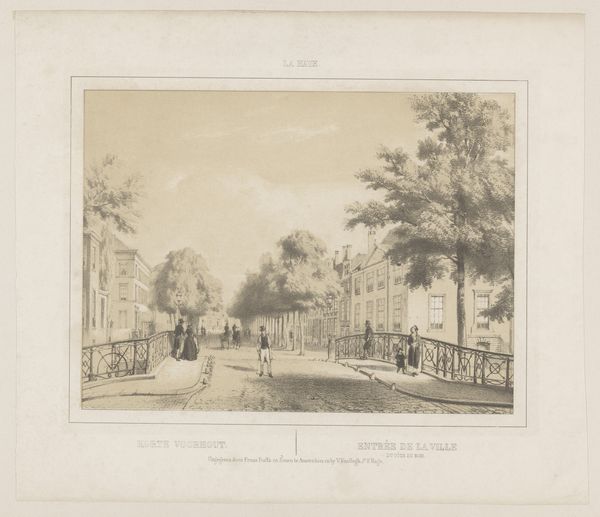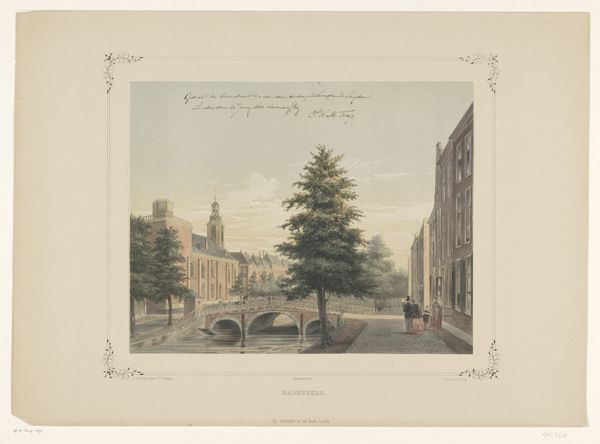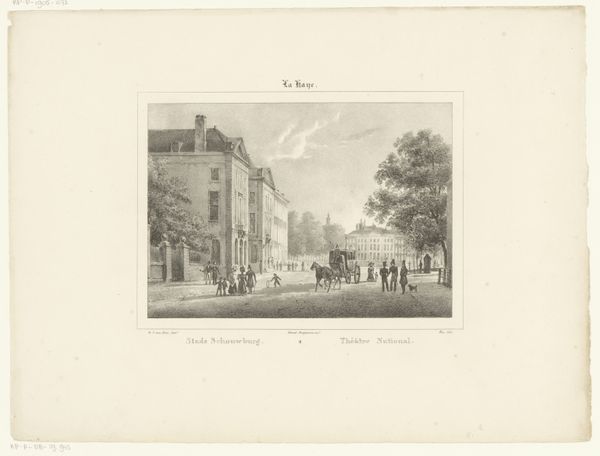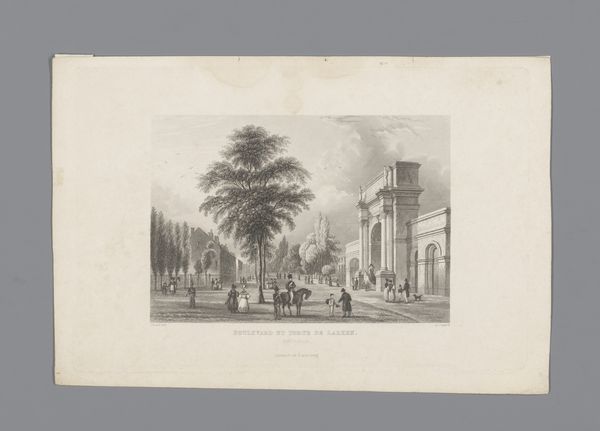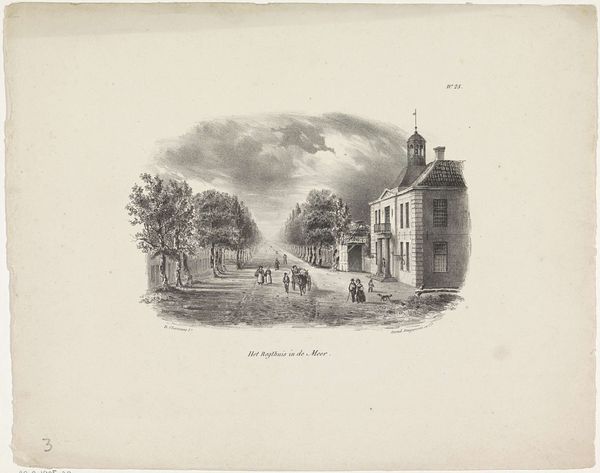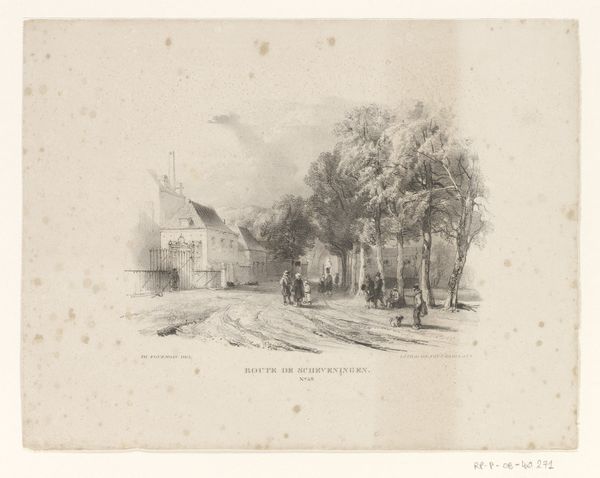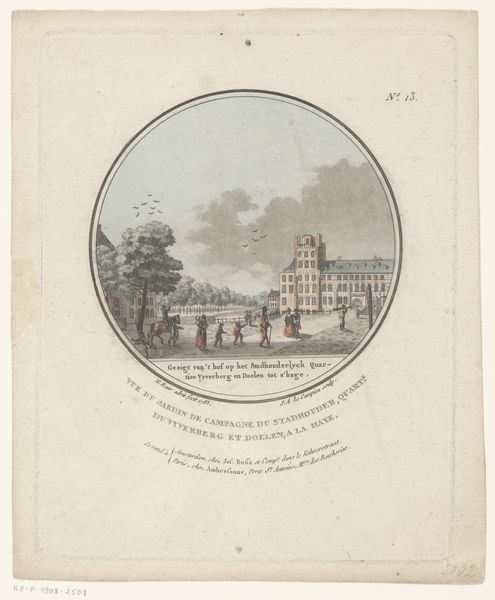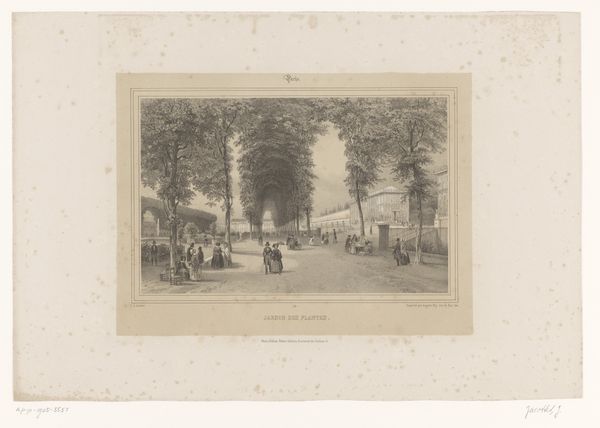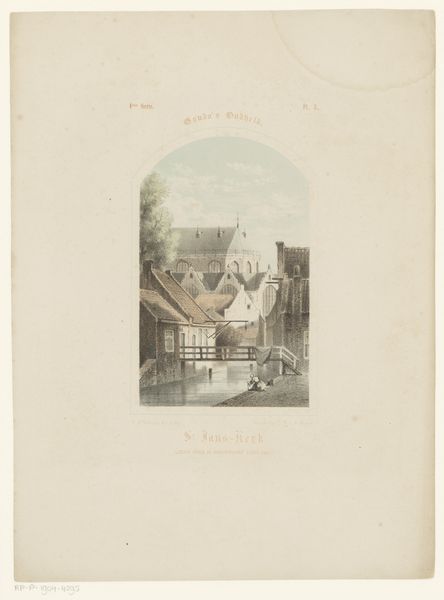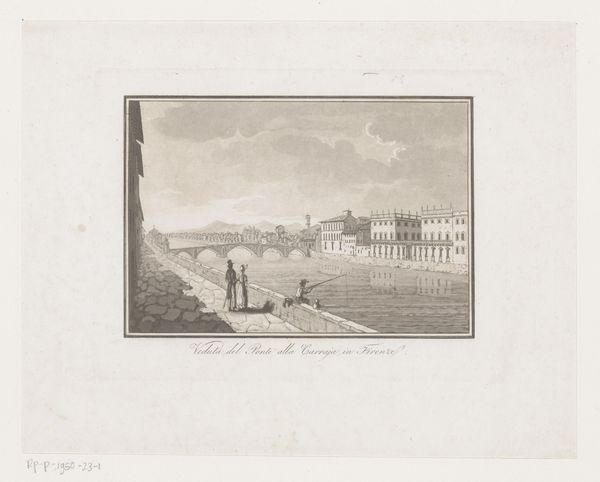
Gezicht op de binnenplaats van het weeshuis te Gouda 1859
0:00
0:00
gijsbertusjohannesverspuy
Rijksmuseum
Dimensions: height 362 mm, width 275 mm
Copyright: Rijks Museum: Open Domain
Curator: This etching, dating to 1859, is titled "View of the Courtyard of the Orphanage in Gouda." It is the work of Gijsbertus Johannes Verspuy. Editor: My first impression is one of stillness, and a certain quietude despite it being an outdoor scene. The subdued palette enhances that feeling. The lines seem incredibly precise. Curator: The setting is particularly relevant. Orphanages in the 19th century were often sites of both refuge and severe institutional control. Considering the vulnerable status of orphans within the socio-political context of the time is very interesting to this piece. Editor: The artist's choices of linear perspective certainly give depth, don't they? Look at the building on the left – the way the lines converge implies order. How it creates almost a vanishing point. Curator: Absolutely. This precision contributes to an idealized image of social order but at the expense of the children’s personal stories, silencing their unique experiences within the orphanage system. The architecture overshadows any sense of childhood play. The artist highlights this architectural dominance. Editor: You are right, and now I can't help but notice that, despite the scene depicting life, everything feels incredibly static. Is it the perspective that seems a bit too perfect? The use of light perhaps is not natural, is not as free. Curator: That stillness also speaks to the societal expectations placed upon these children, erasing their identities in favor of conformity. The figures in the scene are secondary. Almost placed as adornments. Editor: A masterful orchestration of tones – look at the gradations of grey used to delineate form. The artist certainly has control. The stark contrast reinforces the lines. There is not a single line out of place. Curator: And yet that control raises pertinent questions about power. This image reminds me of discourses surrounding childhood, agency, and visibility. A formal analysis alongside a social critique can indeed create a much richer conversation. Editor: Agreed, it seems this artwork encourages that richer and necessary dialogue that exceeds just composition and aesthetic beauty, and I leave with wanting to explore further the many voices in its composition.
Comments
No comments
Be the first to comment and join the conversation on the ultimate creative platform.
